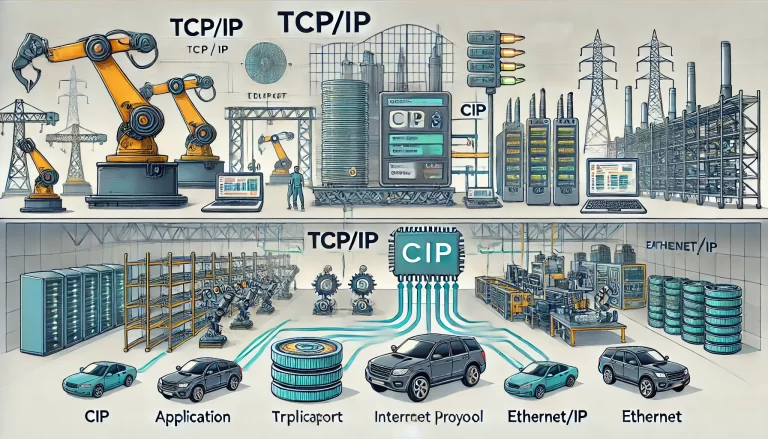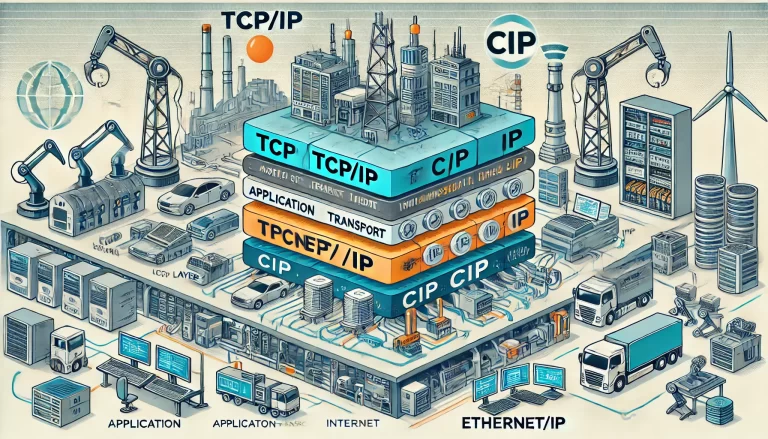The TCP/IP protocol suite (Transmission Control Protocol/Internet Protocol) is the foundational communication protocol for the modern Internet. It adopts a layered architecture to facilitate interoperability, scalability, and modular design. From bottom to top, the main layers are: Network Interface Layer, Internet Layer, Transport Layer, and Application Layer. This article offers a detailed explanation of each layer’s functions and mechanisms.
1. Network Interface Layer
The network interface layer is responsible for the physical and data link aspects of communication.
Functions:
Data Framing and Transmission: It encapsulates IP packets into frames for transmission over the physical network (e.g., Ethernet, Wi-Fi) and decapsulates incoming frames to extract the IP packet.
Hardware Addressing: Uses MAC addresses for local network device identification.
Error Detection: Includes basic frame-level error detection mechanisms like checksums or CRC.

2. Internet Layer (IP Layer)
This layer enables communication across multiple interconnected networks.
2.1 IP Addressing:
Each device is assigned a unique IP address to identify its network location.
IPv4: 32-bit address (e.g., 192.168.1.1), widely used but facing exhaustion.
IPv6: 128-bit address, designed to solve address shortage.
2.2 Routing and Forwarding:
IP packets are routed based on the destination IP address.
Routers consult routing tables and use algorithms (e.g., Distance Vector, Link State) to determine the optimal path.
IP ensures that packets can traverse heterogeneous networks to reach the correct destination.
2.3 Packet Encapsulation:
Data segments from the transport layer are encapsulated into IP packets.
Each packet includes a header with source/destination IP addresses, TTL, protocol identifier, and checksum.
3. Transport Layer
The transport layer ensures reliable and efficient end-to-end communication.
3.1 TCP (Transmission Control Protocol):
Connection-oriented and provides reliable, ordered, and error-checked delivery.
Utilizes the three-way handshake for connection setup:
Client sends SYN.
Server responds with SYN-ACK.
Client replies with ACK.
Implements features like:
Sequence numbers to maintain data order.
Acknowledgment numbers for received data.
Retransmission on loss detection.
Flow and congestion control using sliding windows.
Connection termination involves a four-step handshake (FIN-ACK exchange).
3.2 UDP (User Datagram Protocol):
Connectionless, unreliable, but faster and with lower overhead.
Suitable for real-time applications like video streaming, VoIP, and online gaming.
No retransmission, sequencing, or flow control—data is sent “as is.”

4. Application Layer
This layer provides interfaces and protocols that directly serve user applications.
Common Protocols:
| Protocol | Function |
|---|---|
| HTTP (Hypertext Transfer Protocol) | Enables web browsing and API communication. |
| SMTP (Simple Mail Transfer Protocol) | Handles email transmission between mail servers. |
| DNS (Domain Name System) | Translates domain names (e.g., google.com) into IP addresses. |
Applications send and receive data using TCP or UDP depending on their reliability and performance needs.
5. Data Encapsulation and Transmission Flow
TCP/IP communication follows a layered encapsulation model:
At the sender’s end, the application data is passed down layer by layer.
Each layer adds a header relevant to its function.
At the receiver’s end, the process is reversed.
Headers are removed layer by layer until the application receives the raw data.
This model ensures modular communication and protocol independence, allowing changes at one layer without impacting others.
6. Summary
The TCP/IP protocol stack provides a robust, scalable, and interoperable foundation for global networking. From physical transmission to application services, each layer has a clearly defined role. Understanding this architecture is essential for network engineers, developers, and IT professionals involved in system design, security, and diagnostics.
